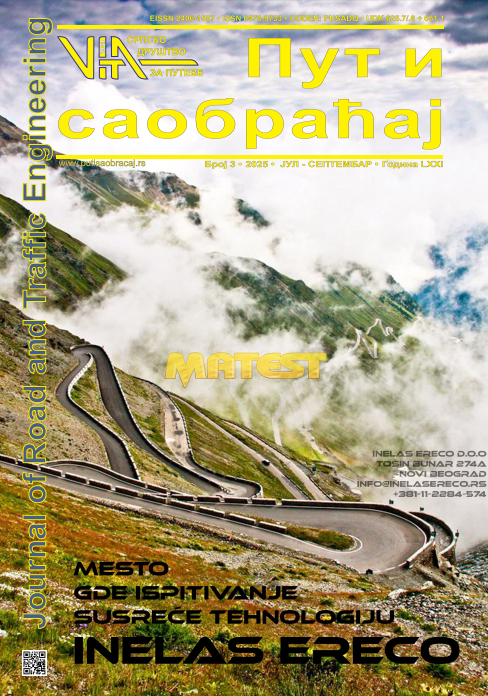Limitations and possibilities of planning the high-speed roads in the urban environment - spatial plan of the special purpose area of the infrastructure corridor high-speed road Osružnica-Obrenovac
Abstract
The Ostružnica-Obrenovac high-speed road was planned and designed in order to connect the central area of the city of Belgrade and the Obrenovac municipality, i.e. i.e. the highways A2 ("Miloš Veliki") and A1 (Belgrade's southern ring road). For the purposes of creating the Spatial Plan, a preliminary technical solutions for the road route for basic calculated speed of 80-100 km/h, as well as for the part of the Sava Riverbed, were prepared. The main challenge of the simultaneous preparation of elements of the conceptual technical design and the Spatial Plan was the definition of the route, the determination of the road corridor and the connection with the surraoundings, in an urban area, with significant natural limitations. The paper analyzed the basic limitations and planning solutions for each of the three sections of the high-speed road. Special emphasis in the work refers to the planning of a high-speed road through landslide zones, the water land of the Sava River, and the existing industrial zone of Barič. Conflicts and ways of their relativization through planning solutions, regimes of space use and measures are pointed out. Through the concluding remarks, a comment on the sustainability of the project and its implementation framework was given.
Downloads
Copyright (c) 2025 Journal of Road and Traffic Engineering

This work is licensed under a Creative Commons Attribution-NonCommercial 4.0 International License.
Authors who publish with this journal agree to the following terms:
- Authors retain copyright and grant the journal right of first publication with the work simultaneously licensed under a Creative Commons Attribution License CC BY-NC that allows others to share the work with an acknowledgement of the work's authorship and initial publication in this journal.
- Authors are able to enter into separate, additional contractual arrangements for the non-exclusive distribution of the journal's published version of the work (e.g., post it to an institutional repository or publish it in a book), with an acknowledgement of its initial publication in this journal.
- Authors are permitted and encouraged to post their work online (e.g., in institutional repositories or on their website) prior to and during the submission process, as it can lead to productive exchanges, as well as earlier and greater citation of published work (See The Effect of Open Access).









